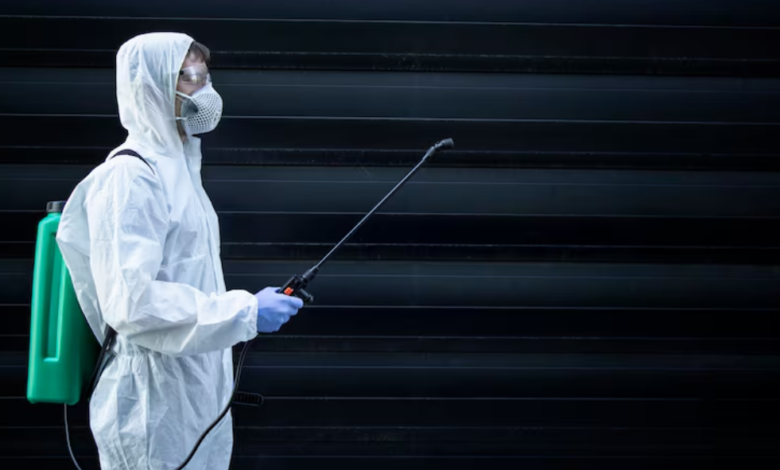Nitrogen Replacement Methods After Soil Fumigation

Understanding Soil Fumigation And Nitrogen Replacement
When we talk about soil fumigation, we’re usually focused on getting rid of all the bad stuff – the pests, the diseases, the weeds that can really mess with our crops. It’s a pretty intense process, and it works by basically sterilizing the soil. But here’s the thing, this sterilization doesn’t just affect the bad guys; it also wipes out a lot of the good microbes that are important for soil health. And, as it turns out, many of these fumigation chemicals can also mess with the nitrogen in the soil, which is a big deal for plant growth. So, after we fumigate, we often need to think about how to put that nitrogen back.
Impact of Chemical Fumigation on Soil Nitrogen Dynamics
Chemical fumigation can really shake things up in the soil. It’s not just about killing pathogens; it can also affect how nitrogen cycles through the soil. Some fumigants might reduce the activity of microbes that convert nitrogen into forms plants can use, or they might even cause nitrogen to be lost from the soil altogether. This means that right after fumigation, the soil might be low on available nitrogen, which is why planning for nitrogen replacement is so important.
Methyl Bromide Alternatives and Their Effects
Methyl bromide used to be the go-to fumigant, but because of environmental concerns, we’ve had to find alternatives. These new options, like ethanedinitrile (EDN) or di-nitrogen tetroxide (DNTO), work differently. Some of them might even add nitrogen back into the soil as they break down, which is an interesting twist. But we still need to figure out how much nitrogen they add and how that affects the overall soil health and nutrient balance.
The Role of Nitrogen Replacement in Soil Health
Putting nitrogen back into the soil after fumigation isn’t just about feeding the next crop. It’s also about helping the soil recover. Healthy soil needs a good balance of nutrients and a thriving microbial community. So, when we do nitrogen replacement, we’re not just adding fertilizer; we’re trying to help rebuild the soil’s natural systems. It’s a way to get the soil back on track after the harshness of fumigation.
Ethanedinitrile (EDN) As A Fumigant And Nitrogen Source
Ethanedinitrile, or EDN, is showing up as a pretty interesting option in the world of soil fumigation. It’s not just about killing off those nasty soilborne pathogens; there’s a dual benefit here because EDN also happens to deposit nitrogen into the soil as it breaks down. This could potentially cut down on the need for separate nitrogen fertilizer applications before planting, which is a nice bonus.
EDN Efficacy and Application Methods
Research suggests EDN is quite effective, sometimes even more so than other fumigants currently on the market, especially against certain soilborne fungi. It seems to spread through the soil profile pretty well, too. Early on, people thought shank injection, a common method for other fumigants, would be the way to go. However, EDN is really volatile, meaning it escapes the soil quickly. This made shank injection less ideal, especially if you’re covering the soil with plastic later.
- Shank injection: Initially considered, but high volatility leads to rapid loss.
- Drip irrigation: This method has emerged as a more practical approach. EDN can be applied through drip systems after beds are formed and covered with plastic.
- Hot gas application: Another method explored for delivering EDN into the soil.
Nitrogen Deposition from EDN Application
One of the more surprising findings with EDN is the nitrogen it leaves behind. As EDN degrades, it forms ammonium, which is basically a form of nitrogen fertilizer. Studies indicate that the amount of nitrogen deposited can be substantial, enough that it might even replace the need for pre-plant nitrogen fertilizer in some farming situations. However, this can also be a double-edged sword. Too much nitrogen, especially in areas prone to leaching, could cause problems.
The amount of nitrogen deposited by EDN application needs careful consideration. While it offers a potential fertilizer saving, excessive amounts could lead to environmental issues like nutrient runoff, particularly in sensitive ecosystems or for crops with specific nitrogen requirements.
Impact of EDN on Soilborne Pathogens and Nitrogen Conversion
EDN’s effectiveness against a range of soilborne pathogens, including fungi that other fumigants struggle with, is a major draw. For instance, in strawberry production, it’s shown promise in controlling issues like charcoal rot, which has been tough to manage with current chemical mixtures. Beyond just killing pathogens, there’s ongoing research into how EDN affects the soil’s natural nitrogen cycling processes. Understanding how EDN influences the conversion of the nitrogen it deposits is key to figuring out the best ways to use it without causing nutrient imbalances.
- Improved control of soilborne fungi compared to some alternatives.
- Effective against pathogens like charcoal rot in specific crops.
- Research is looking into how EDN impacts the conversion of deposited nitrogen in the soil.
While EDN shows a lot of promise, its high toxicity and volatility mean it might be best suited for custom application services rather than being applied by growers themselves. This, along with the cost, could limit its use to high-value crops for now. Registration and wider adoption are still in progress.
Di-Nitrogen Tetroxide (DNTO) For Soil Sterilization
Di-nitrogen tetroxide, often shortened to DNTO, is another chemical that’s been looked at as a potential replacement for methyl bromide. It’s basically a dimer of nitrogen dioxide, and it’s a pretty strong oxidizer. You might know it from its use in rocket fuel, but it’s also been explored for sterilizing things like surgical cloths and as a nitrating agent in chemical processes.
DNTO Effectiveness Against Soilborne Organisms
When it comes to killing off those pesky soilborne organisms, DNTO seems to do a decent job. Lab tests have shown that it can wipe out nematodes pretty quickly, usually within about 10 minutes. Fungi tend to hang on a bit longer, taking around 10 to 20 minutes to be eliminated, and bacteria can take up to 30 minutes. Interestingly, the drier the soil, the better DNTO seems to work. However, some studies suggest that the amounts typically used for methyl bromide might not be quite enough for DNTO to be fully effective, especially against nematodes.
DNTO Application and Environmental Considerations
Applying DNTO involves pumping it into the soil, often at the bottom of columns packed with soil. Researchers have tested different flow rates and taken samples at various times to see how well it works. One of the big pluses for DNTO is its environmental profile compared to methyl bromide. While some DNTO can escape into the atmosphere, it’s thought to be much less damaging than methyl bromide, particularly concerning the ozone layer. To help keep emissions down, it’s recommended to moisten the soil surface after application and cover it, which helps trap the fumigant.
The effectiveness of DNTO as a fumigant appears to be influenced by soil moisture levels, with drier conditions showing greater efficacy. However, careful management of application rates and post-application soil conditions is necessary to optimize its performance and minimize environmental release.
DNTO’s Potential as a Nitrogen Source
Here’s a unique aspect of DNTO: it can actually add nitrogen to the soil. As it breaks down, it can convert into forms of nitrogen that plants can use, like nitrate. This could potentially reduce the need for separate nitrogen fertilizer applications before planting. It’s an interesting idea, turning a fumigant into a nutrient source, though the exact amount of nitrogen deposited and how it affects different crops is still something researchers are looking into. It’s a bit of a balancing act, using it for pest control while also considering its impact on soil fertility.
Managing Nitrogen Levels Post-Fumigation
So, you’ve gone and fumigated your soil. That’s a big step, usually to clear out the bad guys – the soilborne pathogens and pests that can really mess with your crops. But here’s the thing, fumigation isn’t just a one-trick pony; it messes with the good stuff in your soil too, especially nitrogen. It’s like a reset button, but it wipes the slate clean for nutrients as well.
Assessing Nitrogen Content After Fumigation
After you’ve fumigated, the first thing you really need to do is figure out how much nitrogen is actually left in the soil. It’s not always straightforward. Some fumigants, like ethanedinitrile (EDN), can actually add nitrogen back into the soil as they break down. Others might just deplete what’s already there or mess with the microbes that convert nitrogen into forms plants can use. So, you’ll want to get a soil test done. This isn’t just a quick check; it’s about understanding the baseline before you start adding anything back.
- Test your soil: Get a proper soil analysis to see the levels of inorganic nitrogen (nitrate and ammonium).
- Consider the fumigant used: Different chemicals have different impacts on nitrogen.
- Factor in soil type and conditions: Moisture, temperature, and organic matter all play a role in how nitrogen behaves after fumigation.
Strategies for Nitrogen Replacement
Once you know what you’re working with, you can figure out how to get the nitrogen levels back up to where they need to be for your next crop. This isn’t just about dumping fertilizer; it’s about smart application.
- Split applications: Instead of one big dose, apply nitrogen in smaller amounts over time. This helps plants use it more efficiently and reduces the risk of it washing away.
- Slow-release fertilizers: These can be a good option to provide a steady supply of nitrogen without a big initial spike.
- Organic amendments: Things like compost or manure can add nitrogen, but they also improve soil structure and microbial activity. Just be mindful of their C:N ratio.
- Cover crops: Planting a cover crop that fixes nitrogen, like legumes, can be a great way to build up soil fertility naturally before your main crop.
The goal is to replenish nitrogen effectively without causing nutrient imbalances or environmental issues like leaching.
Balancing Biocidal Effects and Nutrient Management
This is where it gets tricky. You want the fumigant to do its job killing off pathogens, but you don’t want it to completely wreck the soil’s ability to support plant life long-term. Some fumigants can inhibit beneficial microbes that are involved in nitrogen cycling. So, while you’re adding nitrogen back, you also need to think about how to get those helpful microbes back in action.
- Timing is everything: Apply nitrogen at the right time, when your crop actually needs it.
- Monitor soil health: Keep an eye on microbial activity and organic matter over time.
- Consider integrated approaches: Maybe you don’t need as much chemical fumigation if you’re also focusing on building healthy soil through other means.
Alternative Fumigants And Their Nitrogen Implications
When we talk about fumigating soil, it’s not just about killing off the bad guys like fungi and nematodes. We also have to think about what happens to the soil’s nutrients afterward, especially nitrogen. Some fumigants, like the older ones, can really mess with the nitrogen cycle, leaving fields depleted. But there are newer options out there, and some of them actually bring nitrogen back into the soil, which is pretty interesting.
Evaluating Different Fumigant Chemistries
Not all fumigants are created equal when it comes to their impact on soil nitrogen. Some chemicals can temporarily reduce microbial activity, which slows down the natural processes that convert organic matter into plant-available nitrogen. Others might directly affect the nitrogen compounds themselves. It’s a balancing act – you want to get rid of the pests, but you don’t want to starve your soil in the process. We’re seeing a shift towards fumigants that are more targeted in their action and have a less disruptive effect on the overall soil ecosystem.
Nitrogen Dynamics with Various Fumigants
Let’s look at a couple of examples. Ethanedinitrile (EDN), for instance, has shown that it can actually add nitrogen to the soil as it breaks down. This is a big deal because it could potentially reduce the need for synthetic nitrogen fertilizers applied before planting. On the flip side, some older fumigants, or even some of the alternatives, might temporarily tie up nitrogen or inhibit the microbes responsible for nitrification. This means that even if nitrogen is present, plants might not be able to access it right away.
Here’s a simplified look at how different fumigants might affect nitrogen:
| Fumigant Type | Potential Nitrogen Impact |
| Older/Broad-Spectrum | Can deplete or inhibit nitrogen availability |
| EDN | Can add nitrogen to the soil as it degrades |
| Chloropicrin | May inhibit nitrification, slowing nitrogen availability |
| Metam Sodium | Can affect microbial activity, indirectly impacting nitrogen cycles |
Optimizing Nitrogen Replacement Strategies
So, what does this mean for farmers? It means we need to be smart about how we replace nitrogen after fumigation. It’s not a one-size-fits-all approach. You have to consider:
- The specific fumigant used: Each has a different chemical makeup and breakdown pathway.
- Soil type and conditions: Soil moisture, temperature, and existing organic matter all play a role.
- Crop needs: Different crops have different nitrogen requirements at various growth stages.
The goal is to find a strategy that replenishes nitrogen efficiently without causing nutrient imbalances or environmental issues like leaching. This might involve using slow-release fertilizers, organic amendments, or even cover crops that can fix nitrogen.
Ultimately, choosing the right fumigant and having a solid plan for nitrogen management afterward is key to maintaining soil health and ensuring good crop yields.
Frequently Asked Questions
Why is nitrogen replacement needed after soil fumigation?
Soil fumigation uses chemicals to get rid of harmful pests and diseases living in the soil. These chemicals can sometimes remove important nutrients, especially nitrogen, which plants need to grow. So, after fumigation, farmers often need to add nitrogen back into the soil to help their crops thrive.
How does Ethanedinitrile (EDN) affect soil nitrogen?
Ethanedinitrile, or EDN, is a chemical used for fumigation. It’s interesting because when it breaks down in the soil, it actually adds nitrogen. This means it can act as both a pest killer and a fertilizer, potentially reducing the need for separate nitrogen applications.
Can Di-Nitrogen Tetroxide (DNTO) provide nitrogen to the soil?
Di-Nitrogen Tetroxide (DNTO) is another fumigant being explored as an alternative to older chemicals. It’s effective at killing soil pests. The good news is that it can also turn into nitrates in the soil, which plants can use as a nutrient source. This makes it a potentially useful option that doesn’t harm the environment as much.
What are the best ways to add nitrogen back after fumigation?
After fumigation, it’s important to check how much nitrogen is left in the soil. Farmers can then add fertilizers or organic matter to bring the nitrogen levels back up. The goal is to give plants the nutrients they need without overdoing it, which could cause problems.
How do different fumigants affect soil nitrogen differently?
Some fumigants, like certain types of chloropicrin or metam sodium, can reduce the amount of nitrogen in the soil or slow down how it’s used by plants. This happens because they affect the tiny living things in the soil that help manage nutrients. It’s important to know which fumigant you’re using to manage nitrogen correctly.
Are there fumigants that can also act as a nitrogen source?
Yes, scientists are looking for fumigants that kill pests but also help the soil by adding nutrients like nitrogen. Chemicals like EDN and DNTO are examples of this. The aim is to find ways to protect crops that are also good for the soil’s long-term health and the environment.






